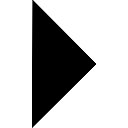
VASYLI矫形鞋垫附加物-VASYLI脚后跟垫
当存在后足内翻时,需要额外地加入(张贴)楔形垫来增强正在使用的矫形鞋垫在这方面的生物力学控制。 后足内翻定义为距骨与第一跖骨纵轴线交叉成角大于15°,跟骨跖面和距骨纵轴线夹角小于30°。(NCSP).
- 通常用矫形鞋垫治疗时,用合适的后脚楔形楔入到NCSP的角度。
- VASYLI用于后足内翻楔形垫有2度或4度的倾斜,由坚固的(红色)密度EVA制成,以达到效果和耐磨。
通常加入(张贴)楔形垫在跟骨的内侧面,以增加反转距下关节,并恢复足部和下肢力线的结构完整性。虽然常规的矫形鞋垫有助于缓解足内翻倾向导致的压力,但通过在适当的角度插入(张贴)楔形垫,可以增加治疗的效果,从而让患者受益。

对于较小尺寸的VASYLI用于后足内翻楔形垫(SK,K,XS),在使用时楔形垫(RVR)可能需要修剪。通过修剪将楔形与拱形轮廓的起点对齐。楔形垫的修剪部分主要是在楔形垫的后部。
原装进口
| VASYLI矫形鞋垫附加物-VASYLI脚后跟垫 | 电邮询价 |
VASYLI REARFOOT POSTING When a rearfoot varus is present, extra wedging is occasionally needed to enhance the controlling aspect of the device you are using. A rearfoot varus is defined as the combination of the subtalar neutral and tibial varum components, which is the neutral calcaneal stance position (NCSP). Position the foot in the NCSP. Wedge the rearfoot to the NCSP angle, using the suitable rearfoot wedge. VASYLI rearfoot wedges have a 2-degree or a 4-degree inclination and are made from firm (red) density EVA for maximum effect and long-term wear. Wedging becomes important when dealing with any pronatory condition. Rearfoot wedging itself is necessary to change the timing of the pronatory phases and to help control the level of excessive pronation present in most of these conditions. Most wedging occurs on the medial aspect of the calcaneus to increase inversion at the subtalar joint, and reinstate the structural integrity of the foot and alignment of the lower limb. Although the device helps to relieve the stress that pronatory disorders tend to cause, we have found that patients benefit greatly from having the orthotic device wedged at an appropriate angle to increase the level of effect. For smaller sizes (SK, K, XS) the rearfoot wedge (RVR) may require trimming. Align the wedge with the start of the arch profile. Trim rear of wedge. VASYLI REARFOOT POSTING Email for Quotation
VASYLI REARFOOT POSTING When a rearfoot varus is present, extra wedging is occasionally needed to enhance the controlling aspect of the device you are using. A rearfoot varus is defined as the combination of the subtalar neutral and tibial varum components, which is the neutral calcaneal stance position (NCSP). Position the foot in the NCSP. Wedge the rearfoot to the NCSP angle, using the suitable rearfoot wedge. VASYLI rearfoot wedges have a 2-degree or a 4-degree inclination and are made from firm (red) density EVA for maximum effect and long-term wear. Wedging becomes important when dealing with any pronatory condition. Rearfoot wedging itself is necessary to change the timing of the pronatory phases and to help control the level of excessive pronation present in most of these conditions. Most wedging occurs on the medial aspect of the calcaneus to increase inversion at the subtalar joint, and reinstate the structural integrity of the foot and alignment of the lower limb. Although the device helps to relieve the stress that pronatory disorders tend to cause, we have found that patients benefit greatly from having the orthotic device wedged at an appropriate angle to increase the level of effect. For smaller sizes (SK, K, XS) the rearfoot wedge (RVR) may require trimming. Align the wedge with the start of the arch profile. Trim rear of wedge. VASYLI REARFOOT POSTING Email for Quotation
VASYLI REARFOOT POSTING When a rearfoot varus is present, extra wedging is occasionally needed to enhance the controlling aspect of the device you are using. A rearfoot varus is defined as the combination of the subtalar neutral and tibial varum components, which is the neutral calcaneal stance position (NCSP). Position the foot in the NCSP. Wedge the rearfoot to the NCSP angle, using the suitable rearfoot wedge. VASYLI rearfoot wedges have a 2-degree or a 4-degree inclination and are made from firm (red) density EVA for maximum effect and long-term wear. Wedging becomes important when dealing with any pronatory condition. Rearfoot wedging itself is necessary to change the timing of the pronatory phases and to help control the level of excessive pronation present in most of these conditions. Most wedging occurs on the medial aspect of the calcaneus to increase inversion at the subtalar joint, and reinstate the structural integrity of the foot and alignment of the lower limb. Although the device helps to relieve the stress that pronatory disorders tend to cause, we have found that patients benefit greatly from having the orthotic device wedged at an appropriate angle to increase the level of effect. For smaller sizes (SK, K, XS) the rearfoot wedge (RVR) may require trimming. Align the wedge with the start of the arch profile. Trim rear of wedge. VASYLI REARFOOT POSTING Email for Quotation
VASYLI REARFOOT POSTING When a rearfoot varus is present, extra wedging is occasionally needed to enhance the controlling aspect of the device you are using. A rearfoot varus is defined as the combination of the subtalar neutral and tibial varum components, which is the neutral calcaneal stance position (NCSP). Position the foot in the NCSP. Wedge the rearfoot to the NCSP angle, using the suitable rearfoot wedge. VASYLI rearfoot wedges have a 2-degree or a 4-degree inclination and are made from firm (red) density EVA for maximum effect and long-term wear. Wedging becomes important when dealing with any pronatory condition. Rearfoot wedging itself is necessary to change the timing of the pronatory phases and to help control the level of excessive pronation present in most of these conditions. Most wedging occurs on the medial aspect of the calcaneus to increase inversion at the subtalar joint, and reinstate the structural integrity of the foot and alignment of the lower limb. Although the device helps to relieve the stress that pronatory disorders tend to cause, we have found that patients benefit greatly from having the orthotic device wedged at an appropriate angle to increase the level of effect. For smaller sizes (SK, K, XS) the rearfoot wedge (RVR) may require trimming. Align the wedge with the start of the arch profile. Trim rear of wedge. VASYLI REARFOOT POSTING Email for Quotation
VASYLI REARFOOT POSTING When a rearfoot varus is present, extra wedging is occasionally needed to enhance the controlling aspect of the device you are using. A rearfoot varus is defined as the combination of the subtalar neutral and tibial varum components, which is the neutral calcaneal stance position (NCSP). Position the foot in the NCSP. Wedge the rearfoot to the NCSP angle, using the suitable rearfoot wedge. VASYLI rearfoot wedges have a 2-degree or a 4-degree inclination and are made from firm (red) density EVA for maximum effect and long-term wear. Wedging becomes important when dealing with any pronatory condition. Rearfoot wedging itself is necessary to change the timing of the pronatory phases and to help control the level of excessive pronation present in most of these conditions. Most wedging occurs on the medial aspect of the calcaneus to increase inversion at the subtalar joint, and reinstate the structural integrity of the foot and alignment of the lower limb. Although the device helps to relieve the stress that pronatory disorders tend to cause, we have found that patients benefit greatly from having the orthotic device wedged at an appropriate angle to increase the level of effect. For smaller sizes (SK, K, XS) the rearfoot wedge (RVR) may require trimming. Align the wedge with the start of the arch profile. Trim rear of wedge. VASYLI REARFOOT POSTING Email for Quotation
VASYLI REARFOOT POSTING When a rearfoot varus is present, extra wedging is occasionally needed to enhance the controlling aspect of the device you are using. A rearfoot varus is defined as the combination of the subtalar neutral and tibial varum components, which is the neutral calcaneal stance position (NCSP). Position the foot in the NCSP. Wedge the rearfoot to the NCSP angle, using the suitable rearfoot wedge. VASYLI rearfoot wedges have a 2-degree or a 4-degree inclination and are made from firm (red) density EVA for maximum effect and long-term wear. Wedging becomes important when dealing with any pronatory condition. Rearfoot wedging itself is necessary to change the timing of the pronatory phases and to help control the level of excessive pronation present in most of these conditions. Most wedging occurs on the medial aspect of the calcaneus to increase inversion at the subtalar joint, and reinstate the structural integrity of the foot and alignment of the lower limb. Although the device helps to relieve the stress that pronatory disorders tend to cause, we have found that patients benefit greatly from having the orthotic device wedged at an appropriate angle to increase the level of effect. For smaller sizes (SK, K, XS) the rearfoot wedge (RVR) may require trimming. Align the wedge with the start of the arch profile. Trim rear of wedge. VASYLI REARFOOT POSTING Email for Quotation
VASYLI REARFOOT POSTING When a rearfoot varus is present, extra wedging is occasionally needed to enhance the controlling aspect of the device you are using. A rearfoot varus is defined as the combination of the subtalar neutral and tibial varum components, which is the neutral calcaneal stance position (NCSP). Position the foot in the NCSP. Wedge the rearfoot to the NCSP angle, using the suitable rearfoot wedge. VASYLI rearfoot wedges have a 2-degree or a 4-degree inclination and are made from firm (red) density EVA for maximum effect and long-term wear. Wedging becomes important when dealing with any pronatory condition. Rearfoot wedging itself is necessary to change the timing of the pronatory phases and to help control the level of excessive pronation present in most of these conditions. Most wedging occurs on the medial aspect of the calcaneus to increase inversion at the subtalar joint, and reinstate the structural integrity of the foot and alignment of the lower limb. Although the device helps to relieve the stress that pronatory disorders tend to cause, we have found that patients benefit greatly from having the orthotic device wedged at an appropriate angle to increase the level of effect. For smaller sizes (SK, K, XS) the rearfoot wedge (RVR) may require trimming. Align the wedge with the start of the arch profile. Trim rear of wedge. VASYLI REARFOOT POSTING Email for Quotation
VASYLI REARFOOT POSTING When a rearfoot varus is present, extra wedging is occasionally needed to enhance the controlling aspect of the device you are using. A rearfoot varus is defined as the combination of the subtalar neutral and tibial varum components, which is the neutral calcaneal stance position (NCSP). Position the foot in the NCSP. Wedge the rearfoot to the NCSP angle, using the suitable rearfoot wedge. VASYLI rearfoot wedges have a 2-degree or a 4-degree inclination and are made from firm (red) density EVA for maximum effect and long-term wear. Wedging becomes important when dealing with any pronatory condition. Rearfoot wedging itself is necessary to change the timing of the pronatory phases and to help control the level of excessive pronation present in most of these conditions. Most wedging occurs on the medial aspect of the calcaneus to increase inversion at the subtalar joint, and reinstate the structural integrity of the foot and alignment of the lower limb. Although the device helps to relieve the stress that pronatory disorders tend to cause, we have found that patients benefit greatly from having the orthotic device wedged at an appropriate angle to increase the level of effect. For smaller sizes (SK, K, XS) the rearfoot wedge (RVR) may require trimming. Align the wedge with the start of the arch profile. Trim rear of wedge. VASYLI REARFOOT POSTING Email for Quotation
VASYLI REARFOOT POSTING When a rearfoot varus is present, extra wedging is occasionally needed to enhance the controlling aspect of the device you are using. A rearfoot varus is defined as the combination of the subtalar neutral and tibial varum components, which is the neutral calcaneal stance position (NCSP). Position the foot in the NCSP. Wedge the rearfoot to the NCSP angle, using the suitable rearfoot wedge. VASYLI rearfoot wedges have a 2-degree or a 4-degree inclination and are made from firm (red) density EVA for maximum effect and long-term wear. Wedging becomes important when dealing with any pronatory condition. Rearfoot wedging itself is necessary to change the timing of the pronatory phases and to help control the level of excessive pronation present in most of these conditions. Most wedging occurs on the medial aspect of the calcaneus to increase inversion at the subtalar joint, and reinstate the structural integrity of the foot and alignment of the lower limb. Although the device helps to relieve the stress that pronatory disorders tend to cause, we have found that patients benefit greatly from having the orthotic device wedged at an appropriate angle to increase the level of effect. For smaller sizes (SK, K, XS) the rearfoot wedge (RVR) may require trimming. Align the wedge with the start of the arch profile. Trim rear of wedge. VASYLI REARFOOT POSTING Email for Quotation
VASYLI REARFOOT POSTING
When a rearfoot varus is present, extra wedging is occasionally needed to enhance the controlling aspect of the device you are using. A rearfoot varus is defined as the combination of the subtalar neutral and tibial varum components, which is the neutral calcaneal stance position (NCSP).
Position the foot in the NCSP.
Wedge the rearfoot to the NCSP angle, using the suitable rearfoot wedge.
VASYLI rearfoot wedges have a 2-degree or a 4-degree inclination and are made from firm (red) density EVA for maximum effect and long-term wear.
Wedging becomes important when dealing with any pronatory condition. Rearfoot wedging itself is necessary to change the timing of the pronatory phases and to help control the level of excessive pronation present in most of these conditions.
Most wedging occurs on the medial aspect of the calcaneus to increase inversion at the subtalar joint, and reinstate the structural integrity of the foot and alignment of the lower limb. Although the device helps to relieve the stress that pronatory disorders tend to cause, we have found that patients benefit greatly from having the orthotic device wedged at an appropriate angle to increase the level of effect.
For smaller sizes (SK, K, XS) the rearfoot wedge (RVR) may require trimming. Align the wedge with the start of the arch profile. Trim rear of wedge.
VASYLI REARFOOT POSTING Email for Quotation
相关产品




 显示该栏目以下所有产品
显示该栏目以下所有产品